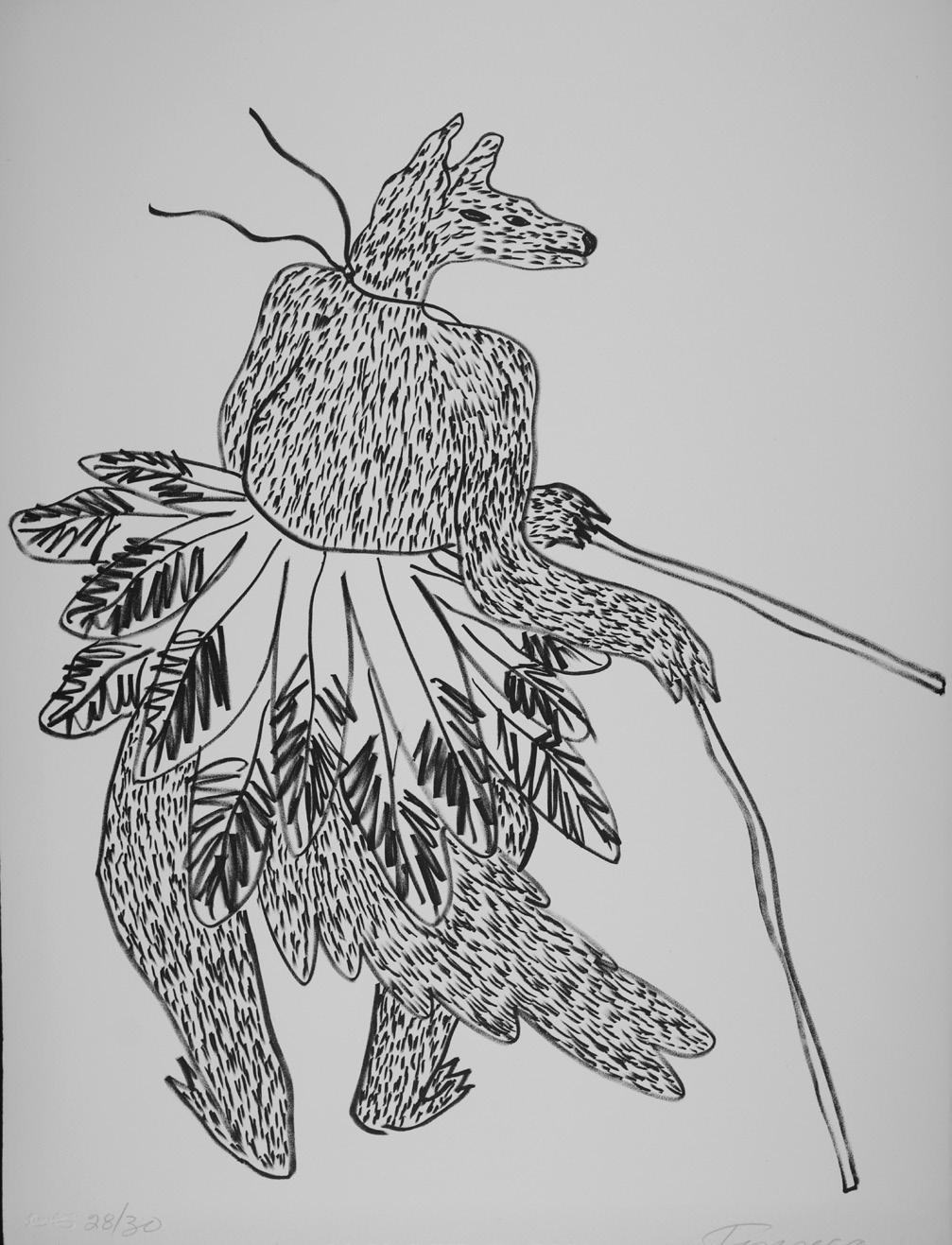
3 minute read
Andrea Hanley
Nativescape
As Chief Curator at the Wheelwright Museum of the American Indian, Andrea R. Hanley (Navajo) works to connect the history of the museum with what’s important to its community, to Native artists, and to contemporary Indigenous art and narratives.
Growing up in Window Rock, Arizona, on the Navajo Nation, Hanley knew how important the arts and culture were to her family and her people. Her parents have always been connected civically and artistically—her father, Benjamin Hanley, was a prominent politician and lawyer, and her mother, Joy Hanley was president of Dineh College and executive director of a Native American nonprofit. Growing up, her family was always surrounded by scholars and artists (many of them relatives), as well as collectors, musicians, and others.
Hanley has devoted her 30-plus years of working in the arts to contemporary Indigenous art, community engagement, and social practice— she defines that last term as a “medium that showcases artists using community as their clay.” She began her career at the Smithsonian’s
But, she says, “I always wanted to move to Santa Fe.” She took a job at the Institute of American Indian Art as the public program manager of their Museum of Contemporary Native Arts, which gave her an extensive overview of the cultural scene and audiences in Santa Fe. There, she curated significant exhibitions including Akunnittinni: A Kinngait Family Portrait: Pitseolak Ashoona | Napachie Pootoogook | Annie Pootoogook. The exhibition followed a sequential study, arranging the exhibition by three generations of Indigenous women: grandmother, mother, and daughter. “As a Navajo woman, I am drawn to this very strong family voice within a tribal context, which started in 1904 and ended in 2016. Coming from a matriarchal tribe myself, I feel this exhibition accurately represents contemporary Indigenous feminist discourse at its finest.” The exhibition traveled to several museums in the United States, including the National Museum of the American Indian, Smithsonian Institution.
“Becoming Curator at the Wheelwright has been an exciting continuation of the work I love best—creating community and connectedness between this long-standing institution and contemporary Native art and culture,” Hanley says. Founded in 1937 by Mary Cabot Wheelwright, in collaboration with Navajo singer and medicine man Hastiin Klah, the museum first functioned as a private repository for recordings of Navajo cultural practices, sand paintings, and tapestries. Later, renamed the Museum of Navajo Ceremonial Art, it exposed the public to the beauty and dignity of the Navajo religion. In 1977 it was given its present name, the Wheelwright
Museum of the American Indian—a nod to expanding Indigenous stories beyond Navajo ceremonial practices.
The Wheelwright’s growing, world-renowned collection now comprises more than 12,000 objects documenting Southwest tribal art and culture from 1850 to the present. The Center for the Study of Southwestern Jewelry is a permanent exhibit of the history and practice of Native silversmithing in the Southwest; other galleries present changing exhibitions of traditional and contemporary Navajo and other Native American arts. Eliza Naranjo Morse’s (Santa Clara Pueblo) charming mural All Together. Making our Way. Every day. follows the staircase from the ground level to the lower level, which also features the Case Trading Post—a reconstruction of a historic trading post on the Navajo Nation complete with squeaky wooden floors and a world-class selection of Native art and jewelry for sale. The Wheelwright also contains nearly 500 linear feet of important archives, including the papers of many noted artists and scholars.
“The museum has a long history of showcasing contemporary Native art by artists such as Pablita Velarde (Santa Clara Pueblo) T. C. Cannon (Kiowa Caddo), Fritz Scholder (Luiseño), and Jaune Quick-to-See Smith (citizen of the Confederated Salish and Kootenai Nation),” says Hanley. “In my curatorial practice, it’s always trying to do something that is personally important or relevant to Native American people. Being a Navajo, I want audiences to understand that reality. The programs and exhibitions I curate all support and reflect both contemporary issues and core tribal values.”
The current exhibition California Stars: Huivanius Pütsiv explores the impact of multiple generations of first Californian artists. Loosely translated from the language of the Chemehuevi people of the Great Basin of southern California and Arizona, huivanius pütsiv means “stars with us/ around us.” The exhibition seeks to show the connections that these artists have among the Wheelwright Museum, New Mexico, Santa Fe, and other state institutions, and the roles these places and institutions have played in elevating contemporary Native American art and narrative.
In addition to her curatorial work, Hanley hosts Nativescape, a monthly radio show on KSFR FM 101.1 that connects Santa Fe audiences with Native American creatives from throughout the country. She serves on a number of boards, including the Southwestern Association for Indian Arts, Santa Fe Indian Market, the Santa Fe Art Institute, the Roswell Artist in Residence Foundation, and the mobile gallery Axle Contemporary, among others.

“At the Wheelwright, I have appreciated the opportunity to be thoughtful, and the flexibility to be really creative in how we present ideas and really dig deep. I love being able to connect with visitors and audiences who aren’t familiar with Native American art about how amazing it is, how important it is, how relevant it is to issues of policy, self-determination, and the land—issues everyone can relate to.”
California Stars: Huivanius Pütsiv is on display through January 14, 2024.
The Wheelwright Museum of the American Indian 704 Camino Lejo, Santa Fe wheelwright.org








